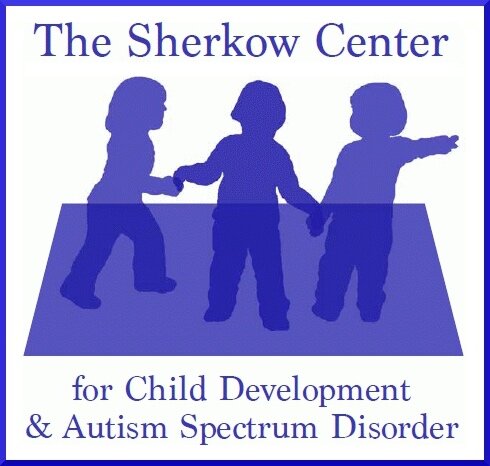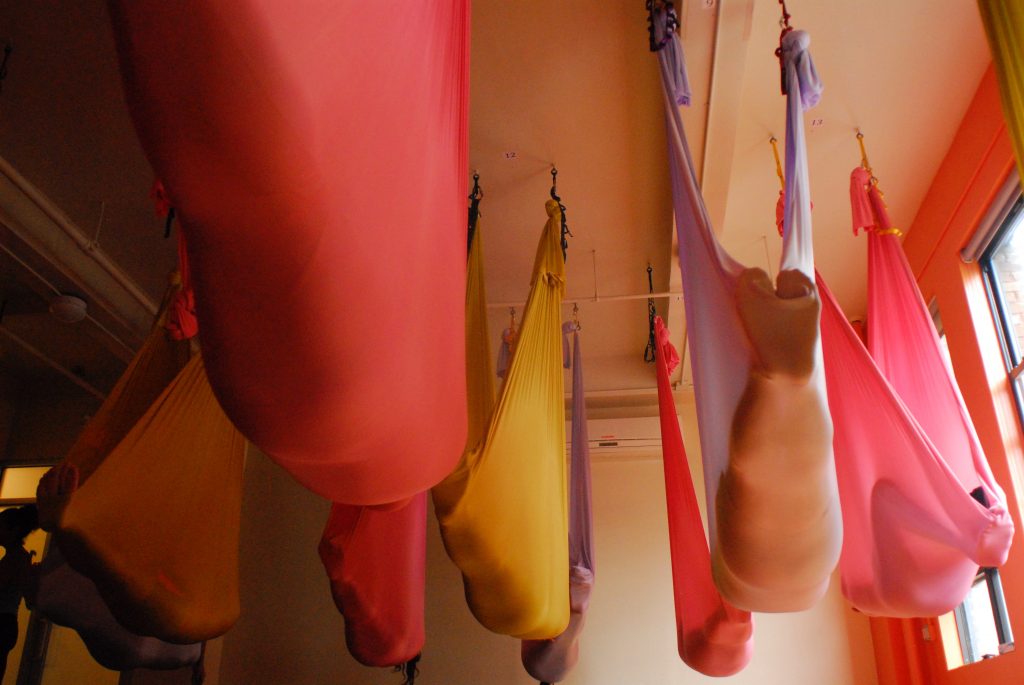Our 2018 Yoga Benefit Success Story
We would like to express our gratitude to everyone who participated in our Annual Yoga Benefits, to our yoga leader Helene Kerheve and the Om Factory, and to all of those who contributed to The Sherkow Center Treatment Scholarship Fund this past May. This year alone, we are able to raise 100% scholarship funds for TWO CHILDREN for the Spark Program next semester!
As a non-for-profit organization, we aim to not only promote the optimal development of all our clients, but to also provide the lowest possible treatment cost for our services; approximately 75% of the annual cost of the Spark Program is covered by the Center, which leaves 25% of the cost to the family of the child. Unfortunately, along with the various additional expenses of individual and related therapies, many parents struggle to afford even this small portion of the overall cost. The Junior Committee was created to address this exact issue: we are a devoted team dedicated to raising money to help our clients, through various community events and fun activities centered around autism awareness.
Thank you again for your generosity, and for helping us make a difference in the lives of The Sherkow Center’s children and families.
Elopement in Children with Autism Spectrum Disorder: How to Address and Prevent It
Elopement occurs when a child with autism suddenly wanders away from a parent or caregiver in public.
This is a common issue encountered by caregivers which can create a difficult, scary, and high-pressure situation for the child’s family. When a child with autism runs away in public, not only is it hard to make him or her come back to his or her senses, but it is often a complicated process just to understand the root of this elopement.
Practice safe travel with ASD children.
The Root Issue of Elopement
Dr. Sherkow believes that the underlying issue in this situation is often related to an inner conflict, fantasy or a specific trigger in the child’s life. From a developmental point of view, it is normal for all children to have the unconscious wish of eloping from their caregivers.
However, children with ASD have more trouble developing patterns and processing such desires, often resulting in bigger tantrums or making it more difficult for caregivers to redirect their attention once they have become fixated on this idea.
The time and way a child with autism elopes often reveals the cause of this inner anxiety.
Dr. Susan Sherkow
In fact, even the smallest change in routine can be difficult to process for the ASD child. This difficulty, in turn, can trigger an emotional outburst — eloping— or a desire to test the person responsible for this change by running away. The child might want to see if the relationship with the caregiver is reciprocal: if the child ignores the rules and runs away, will the nanny fulfill her duty, and follow the rules, to run after the eloping child?
Elopement can occur with a parent, nanny, or other caregiver.
As interns at The Sherkow Center, we have been in situations where a child has run away from us in the street. More often than not, the child always stops after a short distance to check if we are still behind him- if we have been watching, and keeping up with him! This issue of elopement often occurs when a scheduled visit has been abruptly canceled, or a previous session missed, which is a big change in an autistic child’s routine.
The roots of this physical elopement are often similar to those of an emotional elopement: when a child verbalizes his desire to leave his or her family. This other type of elopement will be addressed in our next blog post.
Here are some approaches you can take, from a psychodynamic point of view, to deal with the physical elopement of ASD children in public.
1. Determine what the internal conflict is.
When a child with ASD decides to elope or wander off, it is often the product of some inner anxiety or conflict. Thus, in order to properly deal with such a situation, the first and most important thing to do is to try to understand the root of this inner anxiety or conflict.
First, think about the child’s usual routine and try to identify any changes that could have prompted the elopement. Even minor changes are incredibly disruptive!
If no changes are found, then one can think about how the specific setting and situation might be making the child anxious. The caregiver should verbalize this thought process out loud with the child: “We are at the park after school, and are on our way to see the dentist…”. Do any words employed trigger a reaction from the child, such as laughter, screaming, a tantrum? Once the child shows any type of reaction, the caregiver will be aware of what might be at the root of the elopement, and thus able to handle the situation more directly and effectively.
2. Verbalize the anxiety.
After identifying a potential cause of the elopement, it is important to voice the specific anxiety in order to make the child feel understood. By verbalizing the anxiety and acknowledging the child’s feelings out loud, you will help the child feel reassured and safe in his environment. The statement can be as simple as, “I understand that the dentist must be very scary and give you worries, but everything will be fine.”
Another method for verbalizing the anxiety is to speak in a sing-song tune, while still identifying the trigger and child’s reaction: “I want to go in another direction / but they are not letting me, / maybe next time I will be able to, / run so fast away and go weee!” This tactic makes the interaction between caregiver and child more playful, and the child might forget about his opposition and instead focus on the lighthearted tune.
3. Redirect the child’s attention.
Another useful method for stopping elopement is to redirect the child’s attention to something other than the source of the anxiety. Hyper-focusing on the elopement, and making the child increasingly nervous about the fact that he is eloping, will only make the situation more difficult to deal with.
Instead, try asking the child about something completely different such as what he has planned for the rest of the day, or pointing out something that is going on around him. This will help the child re-center himself in the situation and better control his impulses.
If the child is too anxious to focus on your words, trying to catch the child’s gaze and make eye contact is also useful in redirecting attention.
4. Define boundaries.
Defining boundaries with the child and making him feel more in control of the situation will help avoid elopement in the first place. There are multiple ways to predetermine boundaries with a child. Before going anywhere, first talk with the child about what route he expects to take, which will prevent unpredictable transfers or paths that might upset him.
Then, you can show a visual representation of the path you will be taking that day, so that he internalizes it and is not surprised by the route.
Another option, if indoors, is to put paper cut-outs of “footsteps” on the floor. This type of visualization is meant to show the child exactly where he is allowed to walk, and where he is not allowed.
Finally, when asking a question of the child it is better to give the child two choices, rather than asking an open-end question. Instead of asking, “How do you want to travel to the dentist today?” try narrowing down the question with a specific choice between two things, such as “Do you want to take the A train or a taxi to the dentist?”. This tactic limits the overwhelming possibilities and unpredictability of the question, and most importantly, the child will feel more in control of the situation, as they had a palpable choice in the outcome.
These tactics will be useful in deescalating an elopement, or even avoiding it entirely.
Elopement in Children with Autism Spectrum Disorder: How to Address and Prevent It
By Agathe dePins
Yoga Tips for Autism
On April 24th, The Sherkow Center staff attended a workshop presented by Dr. Deborah J. Gruber at The Shema Kolainu School. This workshop addressed the benefits of practicing yoga for atypically developing children, specifically those with autism.
At The Sherkow Center, we had already discovered the need for beginning each Spark group with a consistent activity in order to help our ASD youngsters transition from the waiting room into the play-space. By implementing a few minutes of yoga poses as a warm-up, we provide a consistent and calming activity as a prelude to the session’s various scheduled activities.
Little did we know, there are a number of additional benefits to practicing yoga! As with other physical activities for children with autism and developmental delays, it provides much-needed predictabilitythat engages the body and all of the senses.
It is already known that yoga helps cultivate consciousness of one’s own behavior. In addition to the mental and physical health benefits of yoga, various yoga techniques also prompt the development of crucial skills, namely those that are communicative and social in nature. Improvements in communication and sociability influence the ability to form healthy relationships, which a child with autism may benefit from.
Yoga Tips for Autism Spectrum Disorder clients
Dr. Gruber introduced relevant and useful behavioral strategies such as utilizing physical prompts, picture schedules, video modeling and positive reinforcement, which can be used during physical activities such as yoga.
While teaching yoga to children with autism, it is important to be aware of the motor limitations of each child. Sometimes, a seemingly “easy” position can be challenging and frustrating for a child. Breaking down the position into a sequence of simple movements will prevent the child from being overwhelmed and allow him or her to follow instructions and stay on task. This also provides a chance to work on and improve the child’s attention span, and to provide an opportunity for imitation.
Video modeling provides a visual demonstration of the position so that the child can process the sequence of movement before practicing and achieving the proper form. Once the sequence of movements has been processed, children can be paired up with peers and take turns demonstrating what they have learned from the following video.
The instructor should notice and praise positive behavior [as Dr. Gruber says “catch’em being good”.] This will increase the probability that a good behavior or position might “stick” and occur again.
Depending on the level of motor coordination of the child, you can adapt your approach by introducing “pretend play skills.” For instance, asking the child to pretend to be a literal “dog”or “tree” will reinforce the child’s mental representation of the pose’s name, allowing him to feel free to do his own version of the position. This creates the opportunity for some lighthearted play and bonding between the instructor and child, as well as for some interesting interpretations! The instructor should imitate the child’s own portrayal, before guiding them into a traditional position with a Downward Dog position for instance.
The use of music during the practice of yoga may be useful for a group-wide sing-a-long, as well as for providing a lighter, more enjoyable environment than an over-stimulating one.
Finally, another way to engage children in developing awareness of their body is to play “Yogi Says,” aversion of the traditional “Simon Says.” This helps children practice body part identification as they work with each yoga pose, making them concentrate on their own bodies as well as the body parts involved in each sequence of the movement.
Tracking Passion in ASD
Tracking Passion in ASD
BY Carlotta Bettencourt
The Sherkow Center team was fascinated to read the New York Times article, For Autistic Boys, the Subway Is Actually Soothing. In fact, we at the Center already know that it can be difficult to transport some children on the spectrum, and as such offer transportation services: in lieu of a more traditional nanny, a trained staff member escorts an ASD client between school and other activities such as our Spark social group, and ultimately serves as a therapeutically-informed and supportive figure for the child, helping the child process the transitions between school and other activities, and is supportive if a difficult moment arises from a transition or other trigger.
As an intern at the Center, I have had first-hand experience taking the NYC subway with autistic boys. Although each boy is on a different “level” of the spectrum, I have always been astonished by the fascination each one has with the subway system. While therapy treatment for ASD mostly focuses on behavioral and emotional regulation, it is important to also strengthen the child’s sense of identity by emphasizing remarkable abilities. In this case, the unique ability to memorize the subway routes and excel at spatial navigation seems to be a remarkably common strength for these children.
How we Understand this Fascination
At the Sherkow Center, we emphasize the importance of neurobiological wiring, as well as prediction and pattern making: these are the tools that a developing child uses in order to scaffold his cognitive resources and, ultimately, how he learns what to expect as he navigates the world. Our classic example of this principle is the image of a mother with a baby bottle: a hungry, crying infant will summon a mother with a baby bottle or breast for food, and after numerous repetitions of this scenario under normal development, the baby will begin to react to and be soothed by just the image of mother arriving. Ideally, baby will internalize this pattern (that mother’s arrival ->leads to food -> leads to positive feelings), and even before seeing the bottle or getting the nipple in his mouth, he will now calm down just at the sight of mother, as he is able to predict that food is now on the way!
Clearly, pattern making and internal scaffolding is an integral part of development. In the ASD population, which has a slightly different neurobiological wiring of the brain, these youngsters still receive pleasure from the pattern-making and prediction process. Of course, this makes the MTA public transport system incredibly appealing to these children! As the article already acknowledges, the set routes and timetables are a huge attraction for autistic boys, but we believe that this is due to their photographic memory as well as the inherent pleasure of making patterns and predictions. An autistic child refusing certain train lines may seem “stubborn,” but what we cannot see is the complexity of the issue: he is reciting every stop on the Z line out loud because of his superb photographic memory, and his excitement is building as he predicts each stop and then arrives at each one, and then there is an opportune service delay and a chance for one of two transfers, which means a chance to be creative!
New or “unknown” things may seem scary to an autistic child, but as all of this occurs in the static, relatively unchanging MTA system, the child can exercise a choice and some control over the route while remaining in the “predictable” realm. It is incredibly important to understand how satisfying it is for a child, to allow his strengths to shine, and subway riders should keep this in mind when they see an excited or “stimming” subway rider.
A Typical Trip
New Yorkers certainly don’t idealize the MTA. Sure, it is convenient at times, since the city traffic is horrible. However, very quickly the loud noises, disturbing smells, and big crowds become very overwhelming even for an adult. One would think that for a child with ASD, these sensorial aspects would make the experience even more difficult. Yet, we have noticed that the sensorial aspects do not seem to bother these children at all, and their excitement becomes contagious along the way in spite of these “negative” aspects. The normally irritating sound of an arriving train suddenly becomes a positive stimulation, even to my own senses, as I clearly watch each boy’s eyes brighten up when staring at an arriving train.
As we enter a subway car, the normal routine is to immediately look for available seats to claim. However, when we are with our ASD clients, the main priority becomes being in the very first car at the front-facing windowed doors: this allows for the best uninterrupted view of the tracks. As mentioned in the original article, one other subway feature that may appeal to autistic children is the rapid visual stimulation passing train cars and tracks offer. Depending on the boy, some might prefer to go to the end or the beginning of the subway train, but the goal seems to be the same: to claim a prime viewing spot on the first or last car, for an uninterrupted and intimate experience between the boy, and the tracks. The sparkle in each and every boy’s eyes are unexplainable.
The mastery of the subway lines, linked to these children’s uncannily perceptive photographic memory and pleasure with pattern-making, allows the child to personally interact with geography and public transport, and as discussed before this creative process can lead to limitless route possibilities within the closed MTA system. One time while transporting a boy from school to the Center, a subway line I usually took to get from point A to point B was down. I immediately starting searching for the subway map to find an alternative way. Effortlessly and before even seeing the map, the boy immediately cited two other ways we could arrive, by making one or two different transfers. Many times during previous transports, this same boy requested and then guided us through many different subway and bus routes; by this time, I knew I could blindly trust an eight-year-old when it came to find a reliable subway route!
Encourage their Passion
It may be surprising that autistic boys enjoy the subway, even in spite of the overwhelming sensorial aspects of it, but again and again we have witnessed this common fascination among boys on the spectrum. To those who have or know a child on the spectrum, there is a high probability that you have seen them wear t-shirts, socks, or any kind of clothing with a subway line logo. This kind of clothing is so popular that it can even be found at the Transit Museum at Grand Central. If you have a child on the spectrum that enjoys public transportation, an idea for a fun family outing might be an afternoon spent exploring the MTA routes, discussing together the fastest or most exciting route options, and making a final stop at the Transit Museum for a chance to see all of the different subway-related books, clothes, and toys they have to encourage your child’s interest.
A Baby’s Ability to Self-Soothe
Our Readers Ask:
I currently have a 2 month old baby. Although I am a stay at home mother, I tend to the house and also pay the bills, which is time consuming. I love my baby and obviously do not want to leave him alone, or upset him while I am working. For this reason, I am wondering when and how does a baby develop the capacity to soothe himself? Is there anything I can do to help the process? Thanks!
This is a great question because there is a common misconception that young infants should be encouraged to self-soothe. While the ability to self soothe starts in infancy, over the course of the first few months of life, a baby must first develop a sense of his mother taking care of him, from which he will create an internal model of soothing and care taking. Babies develop the ability to amuse themselves for brief periods of time around 2-4 months, at which time Mother is often surprised to come into her baby’s nursery and find him awake, looking around his crib, and maybe even babbling to himself or making cooing sounds. Later on, from about 4-6 months, this process can also include a developing interest in his feet and hands, reaching for things in and around his crib, and turning himself over. Eventually, a baby’s ability to explore his environment, and entertain himself without his mother in view, is wonderful and rewarding evidence that he has experienced his mothering as “good enough,” and now, he doesn’t need his mother to be there immediately at all times.
However, although the ability to self-soothe may be emerging during the first 6 months, you should neither depend on this, nor try to foster it. Babies as young as yours will not benefit from being left, even temporarily, to “figure it out.” They will become better self-soothers by reliably being soothed by you in this early period. Steadily, over time, as your baby begins to identify himself as a person, separate from you (6 months and beyond), he integrates his experience of being cared for into an ability to do the same thing for himself.
I appreciate how difficult this can be, but try to bring him wherever you go, in his bassinet or on some blankets, or perhaps you could carry him in a sling or pack as you work. Also, talking to him while you work is a great way to connect with your infant. Babies love to hear the sound of Mother’s voice, which they recognize more quickly than they recognize Mother’s face. And, check on him frequently during his “awake” time, smiling and cooing to him–it will pay off in the end!–Dr. S and Dr. G
What Prompts Rage in Adolescents
ASD children who are not particularly symptomatic in early childhood may still manifest features of social isolation (difficulty with forming and maintaining relationships) as well as suffer from difficulty with transitions. This may progress through middle childhood and adolescence, and these children often experience anxiety and depression. In the course of their development, having not received early diagnosis nor early intervention, many overtly high functioning ASD children fail to develop the building blocks essential for recognizing and modulating their angry feelings, and can run into severe problems with their aggression.
When ASD teens are given unlimited access to video games and social media that have aggressive and/or sexual content, there can be significant consequences. Too often, this type of media exacerbates the poorly regulated sexual and aggressive urges that can morph into horrific fantasies. These fantasies have the potential to turn deadly.
It is of paramount importance to address these children’s needs for attention, care and success at every stage of development. The public and professionals alike must understand just how crucial it is to find the means to identify and help this very vulnerable population.
















